New Videology Zoom Block cameras: 55x and 30x optical zooming
We are pleased to announce the immediate availability of two new autofocus zoom block cameras. These new Videology Zoom Block cameras have 55x and...
SCAiLX AI Imaging
SOFTWARE
Excellence. Every day. Every time.
MARKETS SERVED
Excellence. Every day. Every time.
ONLINE TOOLS
DOCUMENTATION
Excellence. Every day. Every time.
OUR COMPANY
OUR PRESENCE
OUR PARTNERS
Excellence. Every day. Every time.
4 min read
Derya Yoruk
Apr 11, 2023
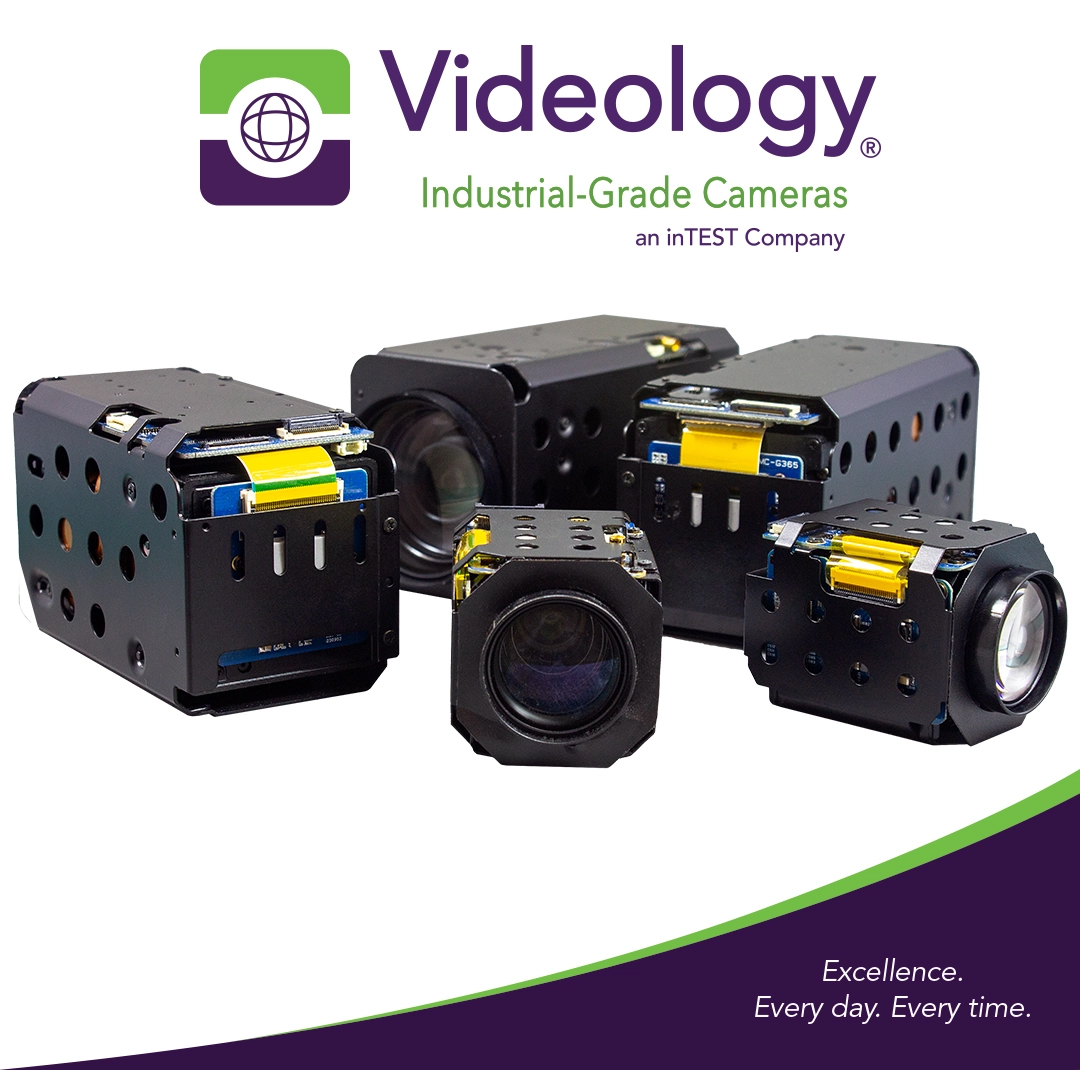
The first zoom block cameras were introduced to the market in the early 2000s. They brought a significant transformation to the imaging industry and the way video projects are designed. Tight integration of the PCB, sensor and lens in a compact footprint makes them stand out and differ from other imaging solutions in the market. They offer fast autofocusing and optical zoom functions that make them the ideal camera to be embedded into a wide variety of applications.
In this post, we will elaborate on the past, current and predicted future developments in zoom block cameras that bring flexible, cost-effective solutions to many industrial-embedded imaging tasks.
It’s hard to believe that optical zoom block camera modules have been in existence for about 20 years. This popular camera technology evolved from the consumer hand-held camcorder market that utilized optical zoom lenses. Consumers appreciated having the ability to zoom into scenes with the camcorders while Japanese consumer camera manufacturers reaped the revenue benefits.
Just about the same time, Japanese security camera manufacturers were seeking a less expensive, less bulky solution. A standard security camera solution in the early 2000s included pairing a board camera with a varifocal lens that operated in a rather short focal length range of 2.8-12mm. Security and surveillance camera installers would manually adjust the focal length to the desired setting for the user.
The first zoom block cameras were created when a wise engineer combined an industrial sensor with low light performance, coupled the optical zoom lens to the sensor and built a metal chassis to house the PCBs. Sony and Hitachi were early pioneers in building zoom chassis cameras. Sony evolved their technology in-house given their close ties to the consumer market, while Hitachi chose best-of-class components. Tamron and Fujinon optical zoom lenses were commonly paired with industrial sensors from Sony. Sophisticated register controls for low light performance were controlled by DSP chips.
VISCA and Pelco-D protocol were the early favorites for camera control and they can still be found on nearly all zoom block cameras manufactured today. Focal lengths expanded dramatically to 4.0~88mm or 22X optical zoom. The scene could be controlled digitally, easing the installation experience and user experience with a wider range of viewing angles.
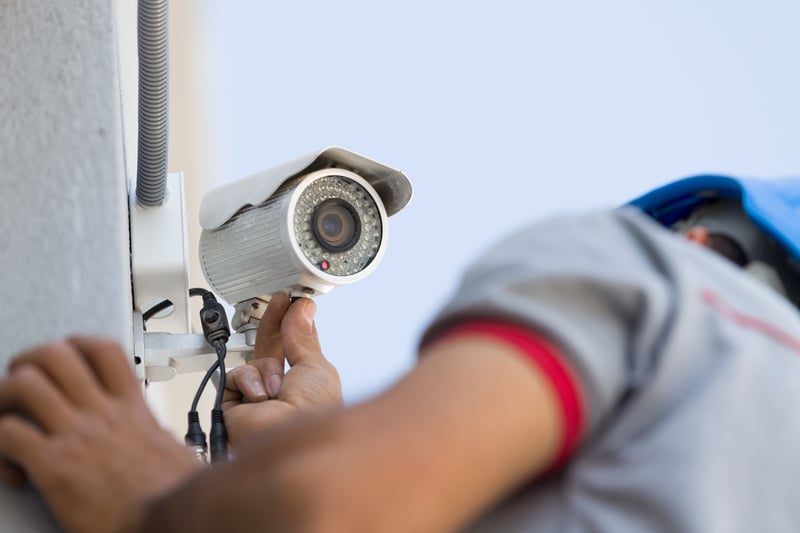
"You do not need a ladder to climb" became the promise of the security camera suppliers as their embedded zoom block cameras enabled autofocusing and optical zooming to be done remotely and at ease.
Security OEM companies quickly saw the benefits of these cameras and designed VGA resolution block cameras into PTZ domes. Given the price and benefits of the product, demand exploded exponentially. Early on, Pelco, Bosch and Axis dominated the PTZ marketplace with thousands of units sold annually. This segment of the market was dominated by Asian PTZ domes and most of these embedded zoom block cameras were made in China.
Since their launch to the embedded imaging market in the early 2000s, the zoom block camera market expanded rapidly beyond conventional surveillance and security systems.
Zoom block cameras all have notable features such as high reliability, stability, impressive adaptability, and seamless integration capability. Their compact form includes a high-resolution lens and built-in sensor and high-speed autofocus system.
Over the past years, improvements to the zoom block camera technology included expanded optical zoom lenses with image stabilization, removable IR cut filter, defog, LVDS digital output, and higher sensitivity sensors which have evolved from 720p to 1080p and onto 4K resolution eventually.
While resolution appears to be maxed out for zoom block cameras for the time being, we expect to see continued improvements in sensor and lens technology to improve lowlight performance in the coming years.

Today, with all specifications mentioned above, zoom block cameras are commonly used in a variety of other applications where Videology excels including traffic monitoring, readers for sight-impaired people, drones and UAVs, crawlers for pipe inspection, and industrial monitoring infrastructure.
The intelligence era has already emerged for zoom block cameras as image processing and analytics have become the 'next big thing' for the industry. Zoom block cameras also get their share with intelligent algorithms and functions that are built directly into the hardware.
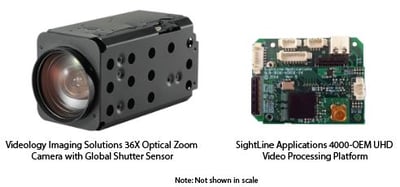 Our collaboration with SightLine Applications is a great example of how Videology Zoom Block camera modules can be extended to onboard image processing.
Our collaboration with SightLine Applications is a great example of how Videology Zoom Block camera modules can be extended to onboard image processing.
As a result of this collaborative effort, our 36x autofocus zoom block camera with a global shutter (25Z2.4-36X) is now compatible with SightLine’s hardware platforms.
SightLine's single-channel (1500-OEM) and multi-channel (3000-OEM, and 4000-OEM) onboard video processors integrate key video functions at our zoom block camera through an accessory interfacing board unit. This integration brings a full set of video processing functions to our 25Z2.4-36X product line in a small, compact package. System integrators can take advantage of these features easily that include image stabilization, scene and object tracking, OSD, video enhancement, recording, and encoding which are critical for many applications.
AI and edge processing definitely seem to be the major trends for the last couple of years. And the next chapter for zoom block cameras commenced when Videology brought AI algorithm functions built into its zoom block cameras with SCAiLX-ZB.
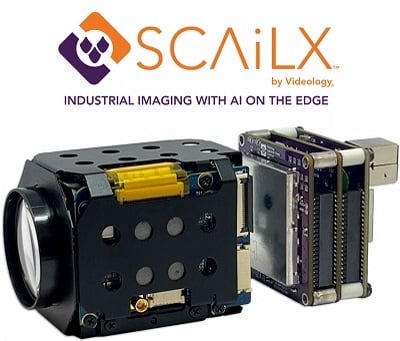 SCAiLX-ZB is the industry's first zoom block camera that has on-camera intelligence with AI image processing. Our engineering team has designed an interface board to convert the digital video information available on the LVDS video port to MIPI CSI-2 (LVDS-2-MIPI), using a dedicated FPGA for interfacing to the i.MX 8M Plus SoM board.
SCAiLX-ZB is the industry's first zoom block camera that has on-camera intelligence with AI image processing. Our engineering team has designed an interface board to convert the digital video information available on the LVDS video port to MIPI CSI-2 (LVDS-2-MIPI), using a dedicated FPGA for interfacing to the i.MX 8M Plus SoM board.
Coupled with a cloud-based AI model management software platform, the intelligent SCAiLX-ZB cameras can detect, analyze and compare images right on the Edge, driving new opportunities in many verticals, including manufacturing, retail, financial services, transportation, energy, healthcare, and more.
Being at the forefront of zoom block cameras, Videology currently offers a family of zoom block cameras with 10x to 55x optical zoom and resolutions that range from 1080p to 4K. Our expertise is backed by in-house engineering with deep knowledge of imaging technologies and the science of colors and light.
Do you need SWaP in a block? Contact us now.
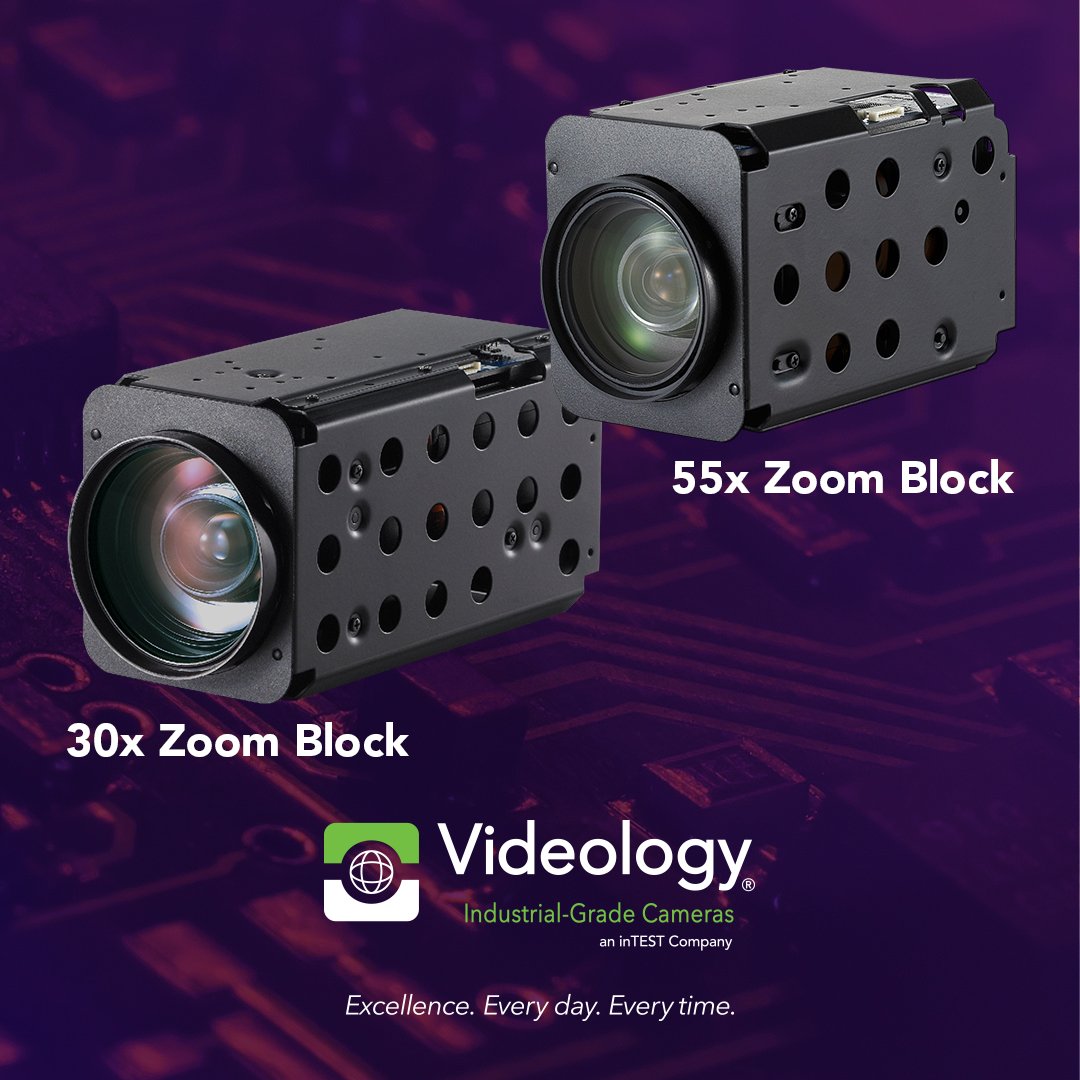
We are pleased to announce the immediate availability of two new autofocus zoom block cameras. These new Videology Zoom Block cameras have 55x and...
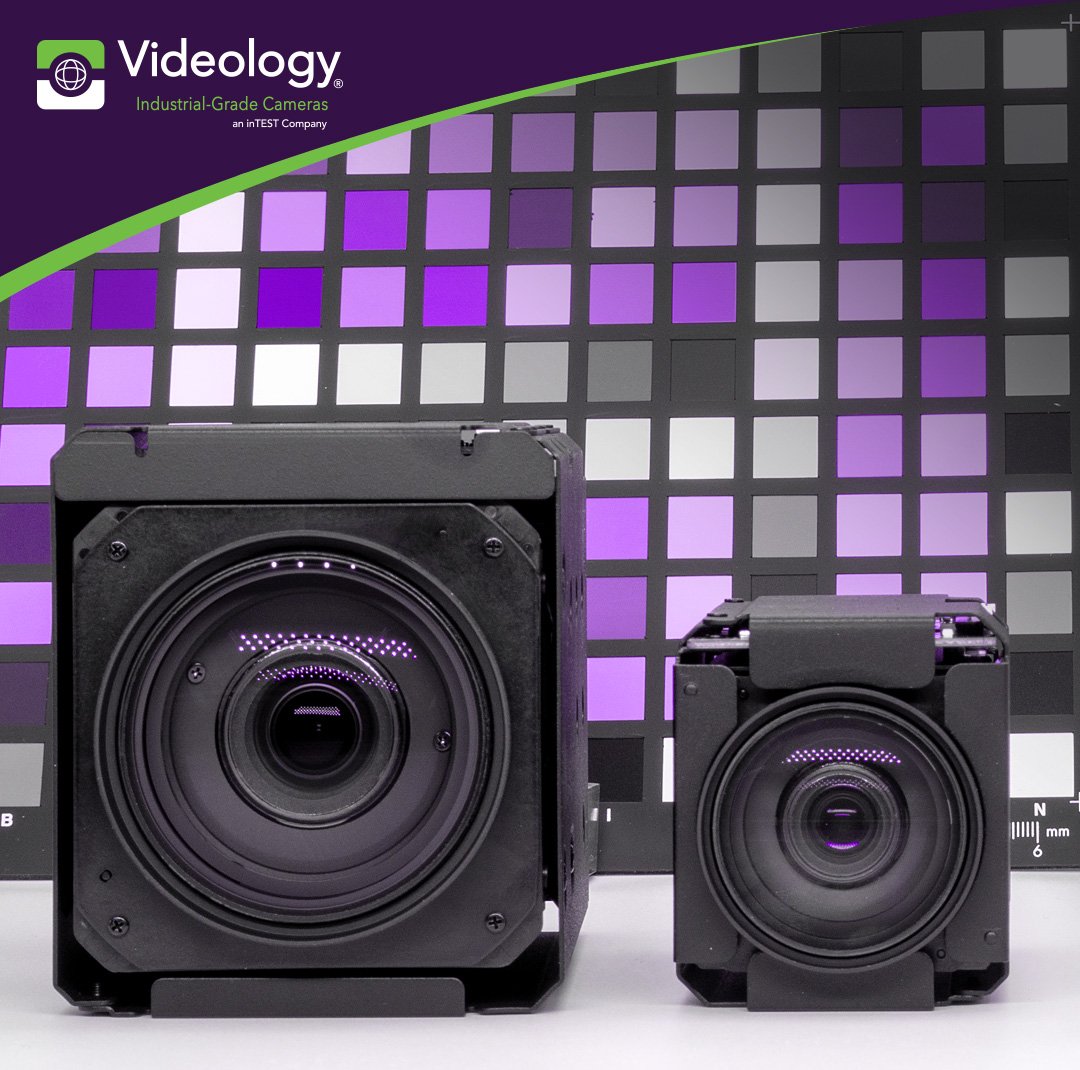
We are excited to introduce two IP Zoom Block Cameras as the latest additions to our camera solutions portfolio. Designed for high-performance...
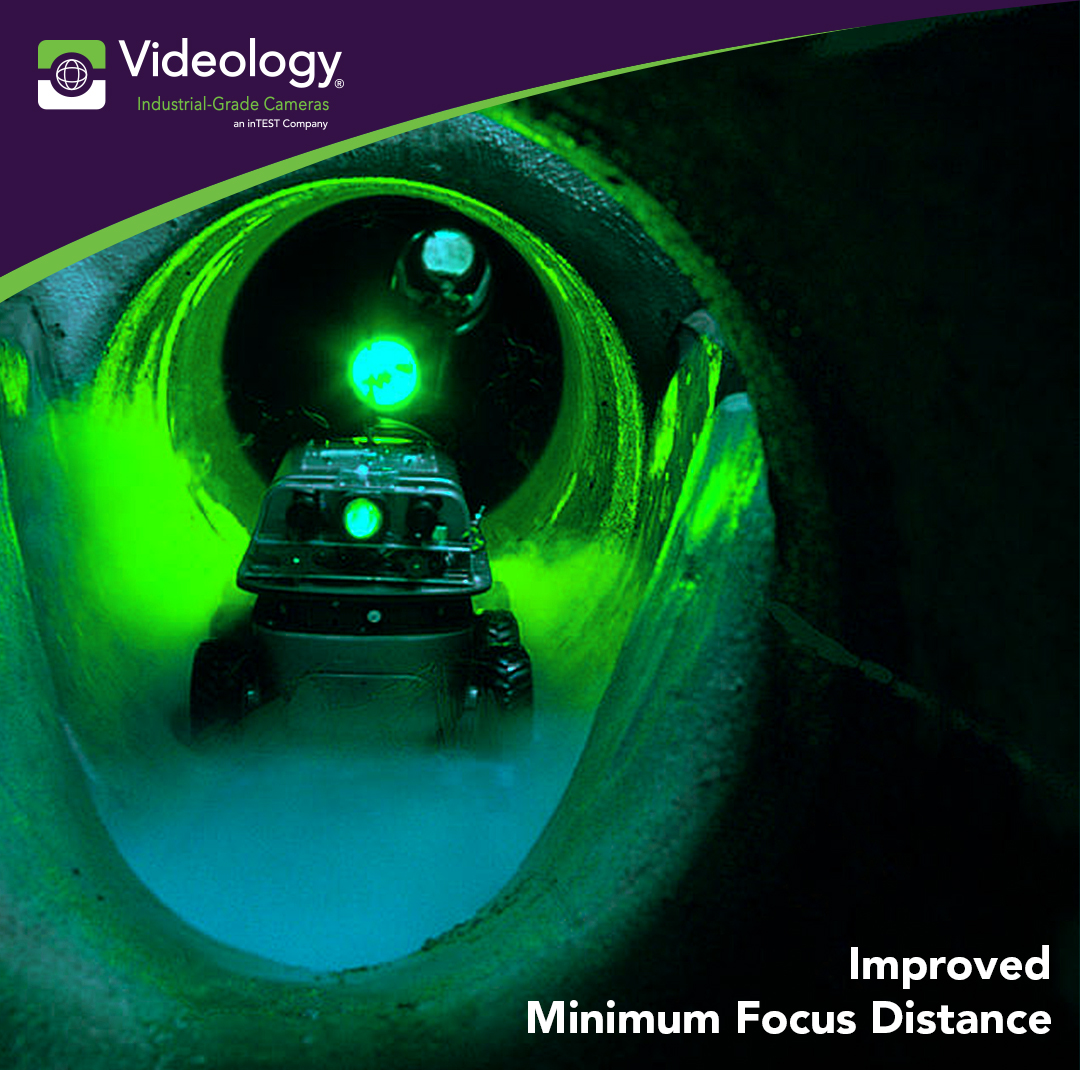
When it comes to capturing detailed images from a shorter working distance, having a zoom block camera with a shorter close focus distance can make...
HEADQUARTERS LOCATION
Videology Industrial-Grade Cameras
35 Hampden Road
Mansfield, MA 02048
United States
Directions
+1 401 949 5332
sales@videologyinc.com